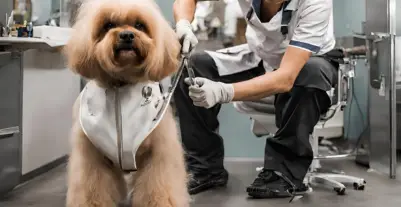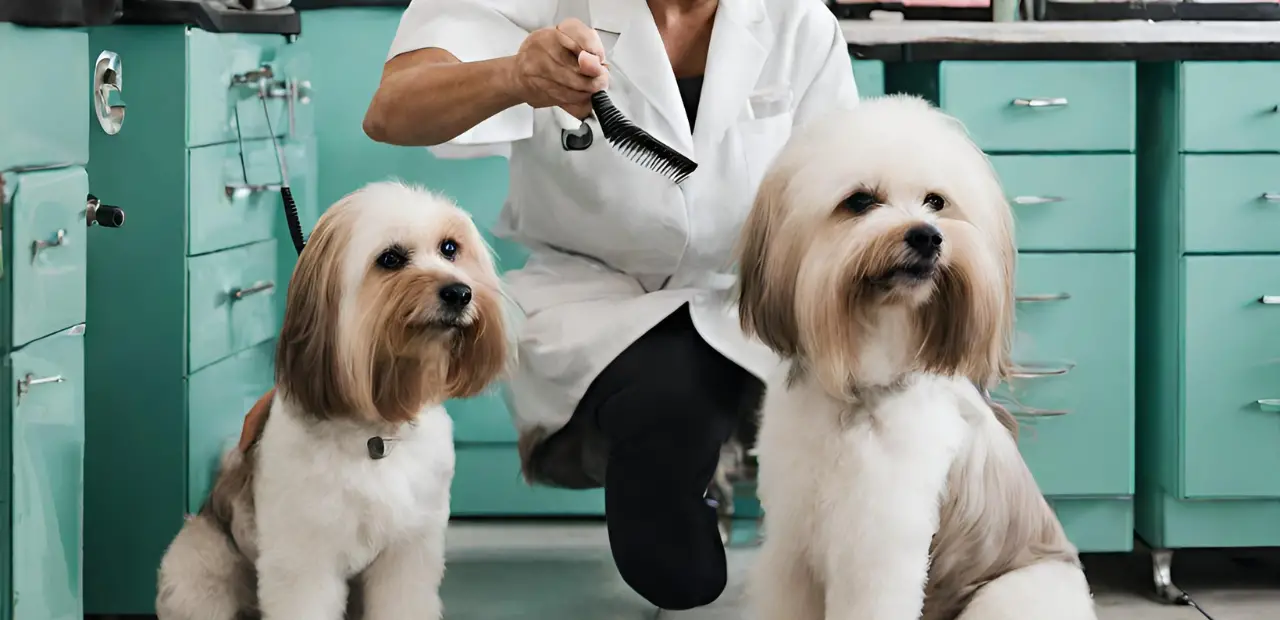They say dogs are man’s best friend, but what happens when a friendly interaction takes a dangerous turn? As a pet owner, it’s crucial to consider the legal consequences if your precious pooch bites someone, especially a groomer. In this article, we will delve into the question: can a groomer sue you if your dog bites them? We’ll explore the legal framework, the factors that may determine liability, and provide expert tips on how to ensure the safety of your four-legged friend and groomers alike.
Understanding the Legal Framework
We often think of our furry friends as part of our family, but the law sees things differently. Just like humans, our beloved pets can sometimes find themselves at the center of a legal dispute. Let’s dive into the legal framework that comes into play when a dog bites a professional handler.
The Concept of Strict Liability
Strict Liability is a legal principle often applied in dog bite cases. In this scenario, pet owners can be held liable if their dog bites someone, regardless of any preceding knowledge or warning of the dog’s dangerous tendencies. It’s like an automatic responsibility that comes with owning a pet.
The essence of Strict Liability is the inherent preventive directive that comes with it, essentially saying keep your dog from harming others, or else. This legal principle’s focus is more geared towards the outcome rather than the owner’s intent or carelessness.
Justia: Strict Liability (https://www.justia.com/injury/negligence-theory/strict-liability/)
Negligence and Contributory Negligence
All dog owners have a duty of care to prevent their pet from causing harm. This principle applies, whether they’re at home, in a park, or at a groomer’s salon. This is where the concept of negligence comes into play.
In legal terms, negligence happens when a person fails to exercise reasonable care, and this failure causes harm to another individual. For our context, a dog owner may be deemed negligent if they knew their pet had a tendency to bite and yet failed to share this essential information with the dog groomer, subsequently causing an injury.
Moving on, there’s also a concept called contributory negligence. This term refers to situations where the injured party – in this case, the dog groomer – may have contributed to the incident by acting carelessly themselves.
An example might be if the groomer used an inappropriate handling technique that is known to induce aggressive behavior in dogs. So, even though a pet might have a biting history, the groomer’s actions could be seen as a contributing factor to their own injury.
Remember, the intricacies of negligence laws can vary from state to state, which is why it’s crucial to consult with a legal expert if you find yourself in this situation.
Exemptions to Liability Laws
There are certain scenarios where a dog owner may not be legally responsible if their pet bites a groomer. Understanding these exemptions is critical in knowing your legal stance.
For example, if a groomer knowingly provokes a dog, leading it to bite, the bite victim may be viewed as responsible. This falls under the legal principle of “_contributory negligence_”, where the person harmed also had a role in causing their injury.
In some cases, if the owner had warned the groomer about the dog’s aggressive tendencies and the groomer ignored these warnings, this can be used to establish contributory negligence. However, this often depends on the specific laws in your area, so it’s always best to check with a local expert.
One more exemption applies if a groomer ignores safety protocols — like muzzling a known aggressive dog. If a bite happens in such a scenario, the groomer may be at least partially to blame.
Remember, these are very general rules and real-life situations are often much more complicated. If you find yourself in such a situation, it’s best to consult a lawyer or professional familiar with your local liability laws.

Factors Determining Liability
So, what will the court consider to pass judgment if a case of a grooming mishap arises? There are a few key factors the legal system might use to pinpoint who should shoulder the responsibility. Let’s examine these determining factors in more detail.
Dog’s History and Behavior
When it comes to legal consequences for bites, factoring in your canine’s history and behavior is key. Was that bite unexpected, or does Rover have a history of aggressive behavior? If your dog is known to be menacing or has bitten people before, it can potentially increase your liability.
Courts often consider this as ’knowledge of danger.’ So, if you were aware of your dog’s rough behavior, yet didn’t inform the groomer beforehand or take sufficient preventative measures, you might find yourself in a sticky legal situation. Being upfront about your pet’s temperament not only ensures their safety but keeps you legally safeguarded as well.
Groomer’s Actions and Expertise
While the spotlight often shines on the dog and its owner in bite cases, a groomer’s behavior and skill level play a crucial role. Their actions can either prevent or invite an unwanted incident.
A veteran groomer, adept at handling various breeds, will have well-honed techniques to calm anxious dogs while grooming.Their expertise lies in reading a dog’s body language, enabling them to sense discomfort or fear that may trigger aggression. Therefore, if a seasoned groomer takes all the precautions to prevent a bite yet still gets bitten, the owner may bear more blame.
Conversely, a novice groomer might not know how to appropriately react when a dog shows signs of agitation. If they act improperly, thus provoking the dog, they may be partially at fault.
It is not just about the groomer’s hands-on skills, but also their knowledge about the species they handle. There are different breeds with varying temperaments. Understanding these nuances is critical to minimize risk. For these reasons, the groomer’s actions and overall expertise can have a direct impact on the chances of them getting bitten, and, subsequently, the outcome of any potential lawsuit.
Owner’s Knowledge and Responsibility
For a pet owner, knowledge is power. Particularly, your understanding of your dog’s demeanor plays a crucial role in managing situations, especially when interacting with others like a groomer. If your dog has a history of being anxious, aggressive, or has bitten someone before, it is your responsibility to inform the groomer.
Failing to do this may not only put the groomer at risk but also lead you to potential legal consequences. You then may end up asking: can a groomer sue you if your dog bites them? It turns out the answer could be yes. According to the law, if an owner knowingly conceals a dog’s dangerous tendencies, they can be held liable for damages.
”An owner cannot escape liability if they have knowledge of the dog’s dangerous behavior and fail to take proper preventative measures.”
Fully understanding your pet’s behavior and sharing this knowledge can ultimately lead to a safer environment for everyone involved. It can help groomers take the necessary precautions while dealing with your dog. Therefore, transparency and open communication play a key role in maintaining the safety of both your dog and the groomer.
Tips for Ensuring Safety
Keeping safety the top priority, it is vital to understand how situations can be managed effectively. Let’s delve into some crucial preventive measures like socializing and training your dog, establishing clear communication with the groomer, and conducting thorough research on choosing the right groomer. All combined, these ensure a positive experience for your four-legged friend and the grooming professional.
Socialization and Training
Training your furry pal and helping them socialize is an instrumental aspect of being a responsible pet owner. This involves acclimating your pet to various situations, people, environments, and other animals. Especially for dogs, early socialization can significantly decrease the chance of them developing fearful or aggressive behaviors later in life.
Top-notch obedience training also plays an integral role in preventing pet-related accidents. Remember, a well-trained dog not only follows commands but also respects boundaries. Therefore, garnering the right training for your dog is a surefire way to ensure that they behave well during grooming sessions, thereby minimizing any potentiality for harm.
The importance of socialization and training cannot be stressed enough. It is preventative medicine for behavioral problems.
An investment in training your dog to be sociable and obedient, can pay dividends in the long term by avoiding unfortunate incidents like dog bites.
Open Communication with the Groomer
Establishing open lines of communication with your pet’s groomer is not only significant for your dog’s comfort but also for the groomer’s safety. Frank and clear discussions about your dog’s behavior can assist the groomer in handling the animal correctly. This can further reduce the likelihood of unpleasant incidents like bites.
A sound conversation should include sharing crucial information about your dog’s temperament, fears, triggers, or pertinent health issues. Ensuring that the groomer fully understands your dog’s needs and potential reactions is a decisive step towards safety.
Remember, the more your groomer knows about your pooch, the better they’ll be able to safely and effectively do their job. Openness, after all, is the key to avoiding misunderstandings and, ultimately, potential legal liabilities.
Conducting Research on Groomers
Selecting a groomer should never be a rushed decision. It is important to take the time to research and choose the right professional for your four-legged pal.
You might wonder, why does this matter in the context of legal repercussions? Well, selecting a groomer who is knowledgeable, experienced, and certified will help reduce the likelihood of an accident, including bites. If an incident does occur, you will have done your due diligence in selecting the groomer, which could be favorable in a potential legal situation.
Conduct thorough research about groomers in your vicinity. Look for online reviews and ask for referrals from other pet owners. Check if the groomer is certified by established organizations like the National Dog Groomers Association of America. Don’t hesitate to ask for references or observe their grooming facility.
This process might seem daunting, but it is an essential part of responsible pet ownership. It not only ensures the safety of the groomer but also creates a relaxing and fear-free grooming experience for your dog. After all, a good groomer-shop relationship is built on trust, and that begins with research.
Conclusion
It’s crucial to strike a balance between the responsibility of pet owners and the duty of groomers to ensure safety. Understanding the legal framework, considering factors determining liability, and implementing safety measures can mitigate the risk of an unfortunate incident. By taking proactive steps and engaging in open communication with groomers, both pet owners and groomers can work together to create a safe and positive grooming experience for everyone involved. Remember, prevention is key, so let’s strive towards an environment where groomers and dogs coexist harmoniously.
- Smelly House Because of Dog? Take These Hygiene Tips - May 20, 2025
- How to Introduce a Dog To a Cats Without Chaos - May 6, 2025
- 4 Best Cavapoo Rescues in the UK 2024 - April 5, 2024








